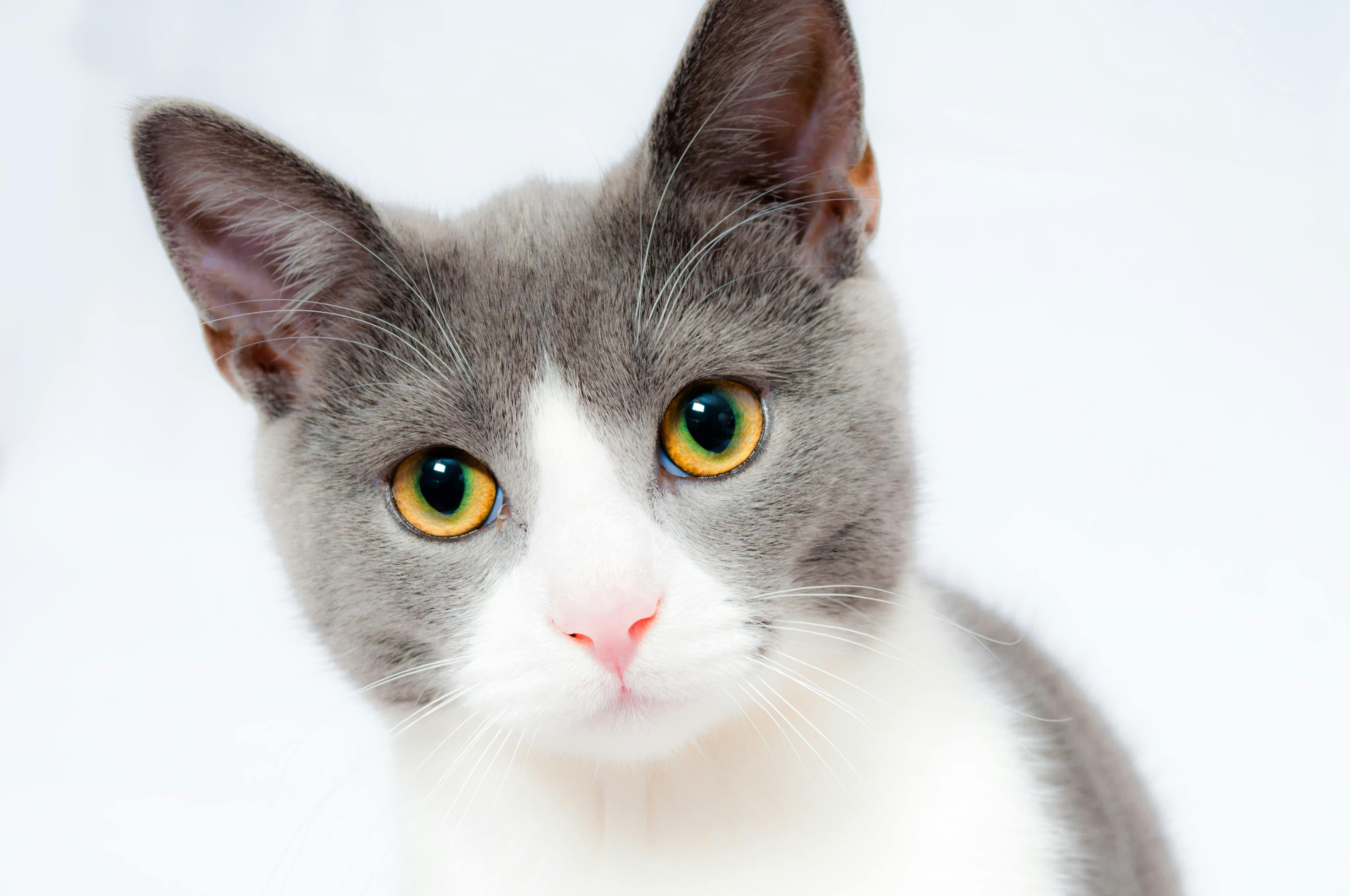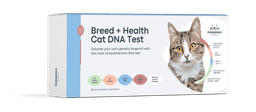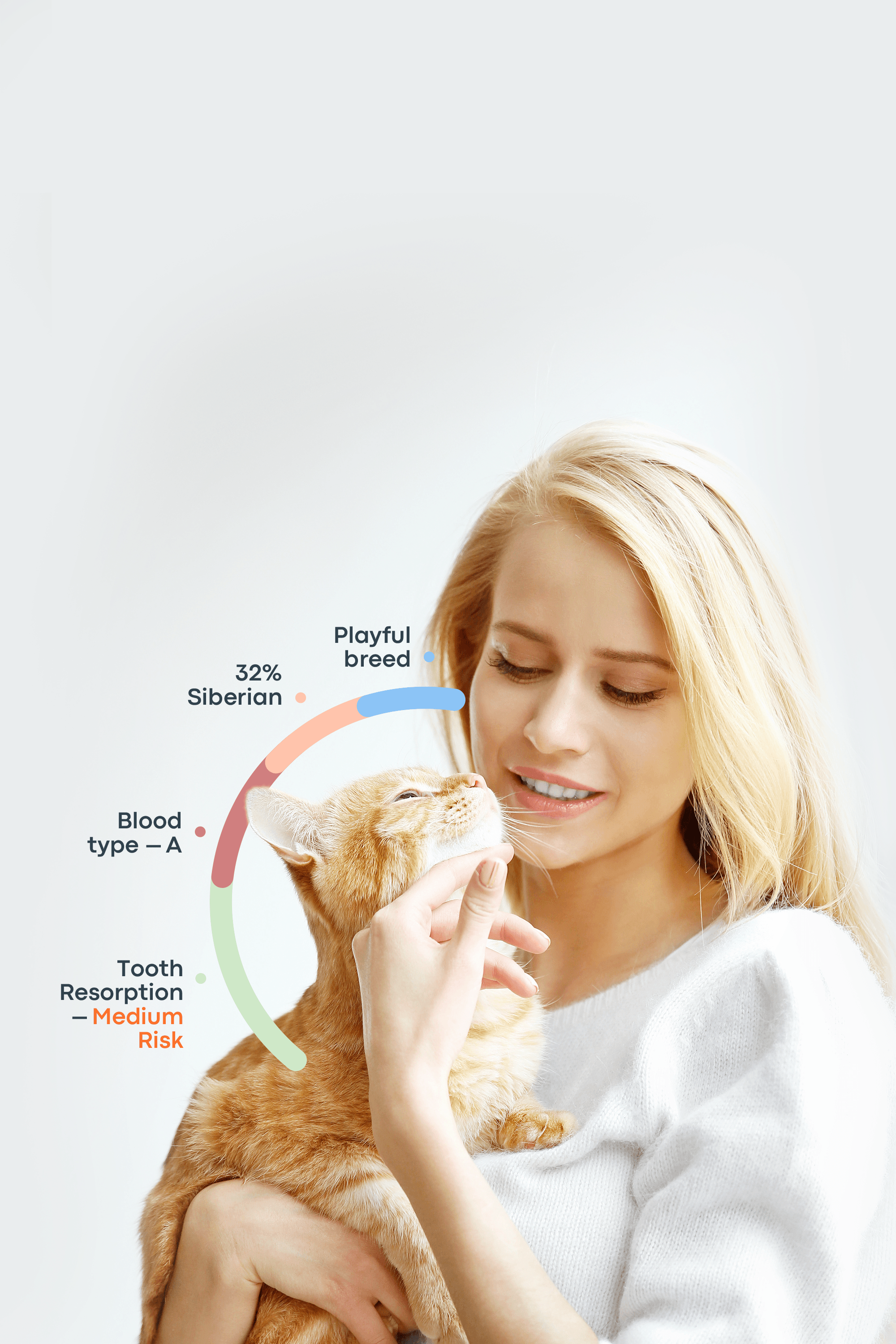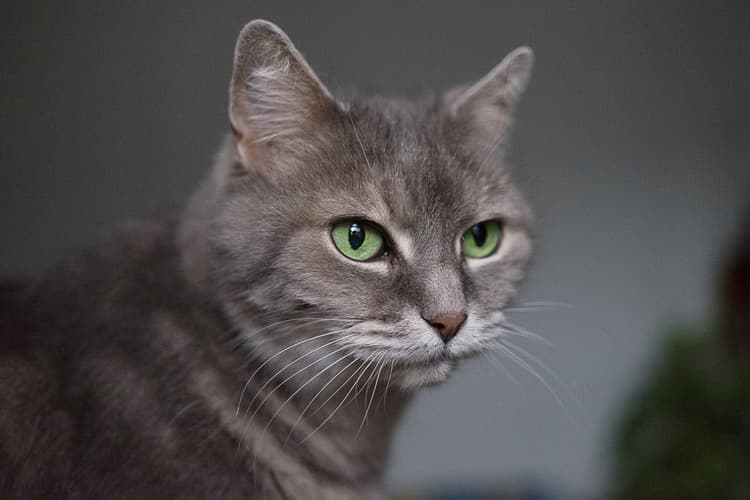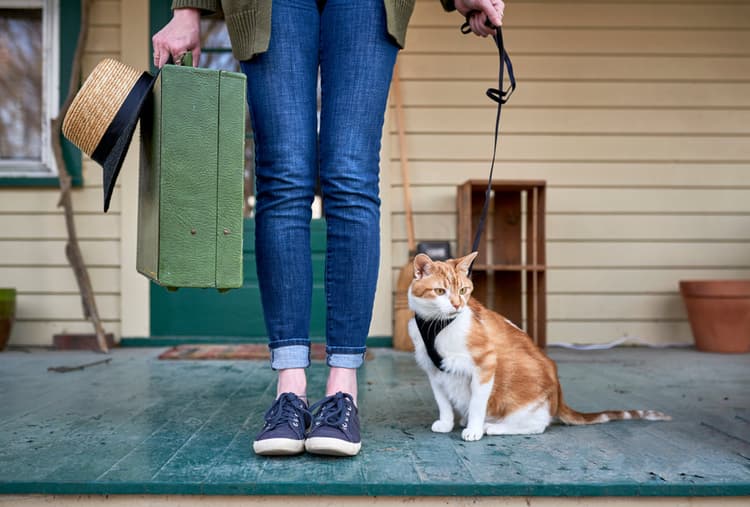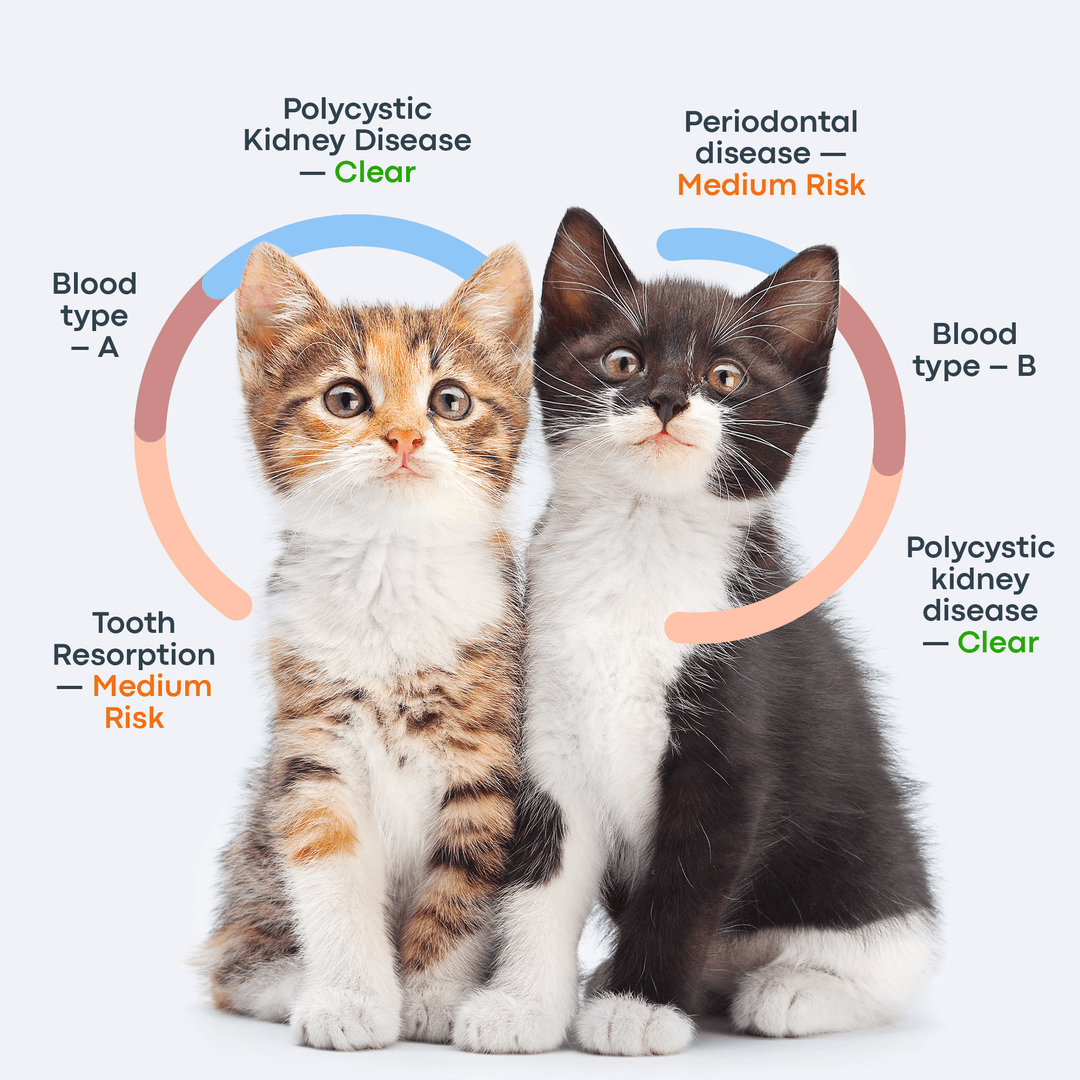As a pet parent, it’s easier to focus on the good things about owning a pet—the cute photos, cuddles, and long play sessions full of laughter. It’s a lot harder to face the uncomfortable truth that your pet isn’t going to be with you forever. They will eventually get old and pass away, and when they do, it’ll break your heart.
Unfortunately, that reality can’t be avoided or ignored. But you can see it coming if you know what to look for. To help you be prepared to face the harsh reality of losing your beloved pet, here are the signs your cat is dying.
What Are the 19 Signs Your Cat Is Dying?
When nearing the end of their lives, cats often display changes in behavior, appearance, appetite, and mobility. However, when a cat is displaying any of these changes, it’s important to bring them to a veterinarian for assessment before assuming that they are dying. This is to rule out the possibility that a treatable disease or condition is causing the symptoms.
Behavioral Signs Your Cat Is Dying
Behavioral changes are often some of the most noticeable changes that can indicate that a cat is dying. Withdrawal and its opposite, clinginess, can indicate near death. In addition, confusion, hiding, irritability, and changes in vocalization can also signal that your cat is nearing the end of its life.
Owners are sometimes the only people who will notice the subtle shifts in a cat’s behavior. These shifts can include:
Behavior Change | Possible Meaning |
Withdrawing or hiding | Seeking solitude as energy declines |
Becoming unusually clingy | Increased need for comfort and security |
Disorientation or confusion | Cognitive decline or nearing death |
Excessive meowing or sudden silence | Distress or neurological changes |
Increased aggression or irritability | Pain, confusion, or discomfort |
Physical Signs Your Cat Is Dying
Unfortunately, the dying process comes with a host of physical symptoms that are easy to observe. In many cases, physical symptoms are the things that cement the fact that the dying process has started.
Some of the most common (and upsetting) physical signs a cat is dying include:
Physical Sign | Description/What It Indicates |
Weight and muscle loss | Body using fat and muscle for energy |
Loss of appetite | Reduced interest in food or water |
Lethargy/weakness | Decreased energy and mobility |
Cold extremities | Circulation slowing down |
Decline in grooming | Loss of energy or motivation |
Signs of dehydration | Dry gums, poor skin elasticity |
Incontinence, vomiting, diarrhea | Organ decline |
Confusion/sunken eyes | Severe dehydration or systemic failure |
Signs of Pain and Discomfort
While not always a symptom of dying, pain and dying often go hand in hand. You can recognize that your cat is in pain or feeling uncomfortable by taking note of their symptoms:
Pain Indicator | What It Might Mean |
Stiffness or limping | Joint pain or arthritis |
Reluctance to move | General pain or weakness |
Resistant to touch | Sensitivity due to pain |
Persistent crying | Distress or discomfort |
Restlessness | Struggling to find comfort |
Unkempt coat | Inability to groom due to pain |
When you begin to notice signs of pain, it’s a good idea to keep track of them so that you can talk them over with your veterinarian.
How Do I Know if My Cat Is Dying?
Not every sign of physical decline, pain, or behavior change means your cat is dying. Sometimes, these symptoms may point to an illness, infection, or injury that can be treated with the right care. That’s why it’s important not to assume the worst before getting a clear diagnosis.
The best way to determine what’s really happening is to consult your veterinarian. They can perform a thorough examination and recommend tests to identify whether your cat’s symptoms are due to a treatable condition or the natural dying process.
In the meantime, you can start observing your cat more closely by asking yourself a few key questions:
Is my cat old?
Does my cat have a terminal disease?
Is my cat experiencing/showing multiple different symptoms across the various categories?
Answering “yes” to any of these questions may suggest that your cat is approaching the end of life, but only a veterinarian can confirm this.
It can also help to track your cat’s quality of life. Many veterinarians recommend keeping a simple journal of your cat’s “good days” versus “bad days.” If the number of bad days—when your cat seems uncomfortable, withdrawn, or in pain—starts to outweigh the good ones, it may be a sign that their condition is worsening.
As a general rule, if you ever find yourself wondering, “Is my cat dying?” it’s best to schedule a veterinary visit right away. Veterinarian Dr. Heather Loenser, DVM, emphasizes that a professional assessment is the safest and most compassionate step you can take for your pet.
Dying Cat Stages
It’s thought that there are three stages of the dying process for cats. These stages consist of various different symptoms of differing severity.
Early: appetite decline, irregular sleep habits, subtle withdrawal, hiding.
Mid: severe lethargy, difficulty moving, worsening health overall.
Final: shallow breathing, unresponsiveness, loss of bladder/bowel control, cold extremities.
How long each stage of death lasts depends on your cat and what’s causing the process to kick off in the first place. Your cat’s natural resilience and average health can play a part in how quickly they transition through the stages. Time can vary from weeks to months.

How Do I Know if My Cat Died Peacefully?
Understanding what a peaceful death looks like can help you process your cat’s passing with compassion and clarity. While natural death and euthanasia may look very different, both can be guided by love and care.
Natural Death
When a cat dies naturally, the process can sometimes be difficult for owners to witness. As the body begins to shut down, you may notice irregular or shallow breathing, twitching, or gasping. Although these signs can appear distressing, they don’t always indicate pain. In many cases, they’re simply part of the body’s natural reflexes as life comes to an end.
A cat may also become unresponsive, lose bladder or bowel control, or grow cold to the touch—especially in the extremities. Some cats prefer to hide or find a quiet spot when their time is near. If your cat is dying at home, you can make them more comfortable by keeping them warm, hydrated (if they can still drink), and surrounded by familiar scents and gentle reassurance.
Euthanasia
Euthanasia offers a more controlled and medically supervised process. A veterinarian first administers a sedative, allowing your cat to fall into a calm, sleep-like state. Then, an injection is given to stop the heart painlessly and quickly. The cat’s body relaxes completely, and they pass away peacefully—often within just a few minutes.
Many pet parents choose euthanasia to ensure their cat does not experience prolonged suffering. You can stay with your cat during the procedure, speaking softly or holding them, providing comfort in their final moments.
Aspect | Natural Death | Euthanasia |
Process | Body shuts down gradually; breathing becomes shallow and irregular. | Vet gives a sedative, then an injection that stops the heart painlessly. |
Comfort | May involve distress or discomfort without medical help. | Calm and painless; cat relaxes under sedation. |
Duration | Can take hours or days. | Usually 5–20 minutes total. |
Emotional Impact | Natural but can be difficult to watch. | Peaceful and reassuring; owners can say goodbye. |
Veterinary involvement | Limited | Direct veterinary guidance. |
Aftercare | Burial or cremation arranged by owner. | Vets often handle cremation or burial options. |
How to Comfort a Dying Cat
Once you realize that your cat is dying, it’s natural to want to take good care of them and shower them with love. You can do this in a number of ways, starting with providing them a quiet, calm space to relax and spend their time. Offer comfortable bedding, their favorite toys, and plenty of food and water, assuming that they still have an appetite.
You can assist them with grooming as needed and help them with pain control using heating pads, and/or medication that has been authorized by your veterinarian.
Most importantly, though, is simply your presence! Being near your cat and speaking to them in a calm, soothing voice can do wonders for keeping them comfortable.
End-of-Life Veterinary Care
End-of-life care involves hospice care, which focuses on symptom management and comfort during the last days of a pet’s life. Oftentimes, hospice care will include the use of pain-reduction medications and other medications that can be used to help control the severity of unpleasant symptoms.
Some pet owners consider end-of-life care to include the euthanasia process, if that’s what they choose for their pet. This is because euthanasia is seen by many pet owners and professionals as being humane and an act of mercy, meant to reduce suffering. Taking it a step further, in-home euthanasia is an option for many cats and their owners. By doing the process in the pet’s home, stress levels can be reduced.
Coping With Grief After Losing a Cat
After your cat has passed away, the grief will undoubtedly hit you “like a train”. This is normal and to be expected after the loss of your furry friend. While it may seem like you are drowning in it, there are a few ways that you can manage it.
Support groups
Journaling
Memorializing (paw prints, gardens, photos, scrap books etc.)
Conclusion
Losing a pet is never easy, but it can also be a time of love and reflection. By focusing on your cat’s comfort and dignity in their final moments, you offer them the peace they deserve. Use this time to be present, show affection, and create gentle, meaningful memories together. These final moments can become a lasting reminder of the deep bond you shared—a connection that continues in your heart long after they’re gone.
Frequently Asked Questions
When a cat stops eating, how long before they die?
If a cat completely stops eating, it usually means their body is shutting down. Death can occur within a few days, though the exact timing depends on their overall health, hydration levels, and any underlying conditions. Cats who still drink small amounts of water may live slightly longer.
Do cats say goodbye before they die?
Cats don’t understand death the way humans do, so they don’t consciously “say goodbye.” However, many cats show changes in behavior near the end of life—such as seeking solitude, wanting extra affection, or choosing a quiet, safe place to rest. These behaviors can feel like a final farewell to their loved ones.
How long does it take for a cat to die naturally?
A cat’s natural dying process can take anywhere from a few days to a few weeks, depending on the underlying illness, age, and strength of the cat. During this time, they may gradually eat and drink less, sleep more, and withdraw from activity.
How can I tell if I need to euthanize my cat?
You should consider euthanasia when your cat’s quality of life declines beyond what can be managed with care or medication. Signs include chronic pain, difficulty breathing, severe weakness, inability to eat or drink, or distress that can’t be relieved. Your veterinarian can help assess your cat’s comfort and guide you through this difficult decision.
What are cats old age dying symptoms?
Common signs of end-of-life in elderly cats include increased sleep, disorientation, loss of appetite, changes in grooming habits, incontinence, and a general withdrawal from people or other pets. These changes often happen gradually as the body slows down.
What are the most common signs cat is dying?
The most frequent signs that a cat is near death include labored or irregular breathing, extreme lethargy, weakness, weight loss, loss of appetite, and decreased responsiveness. Some cats may also become more vocal or unusually quiet.

